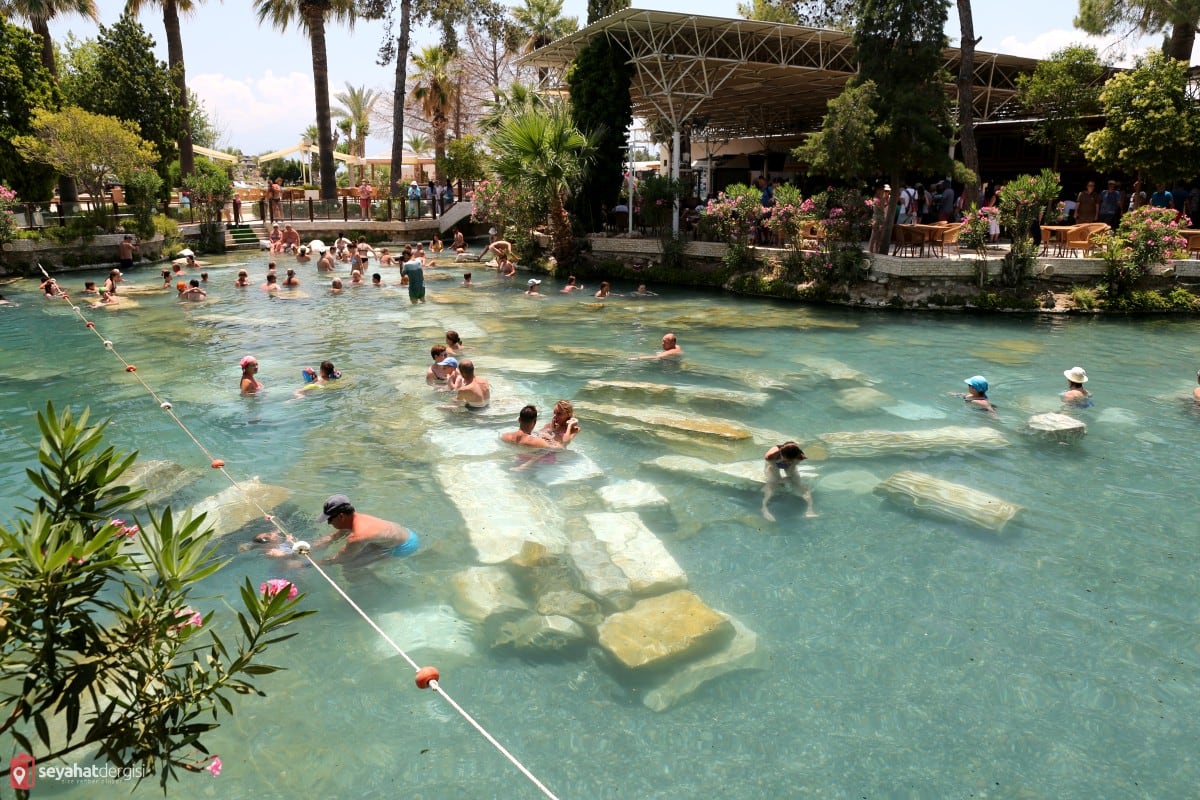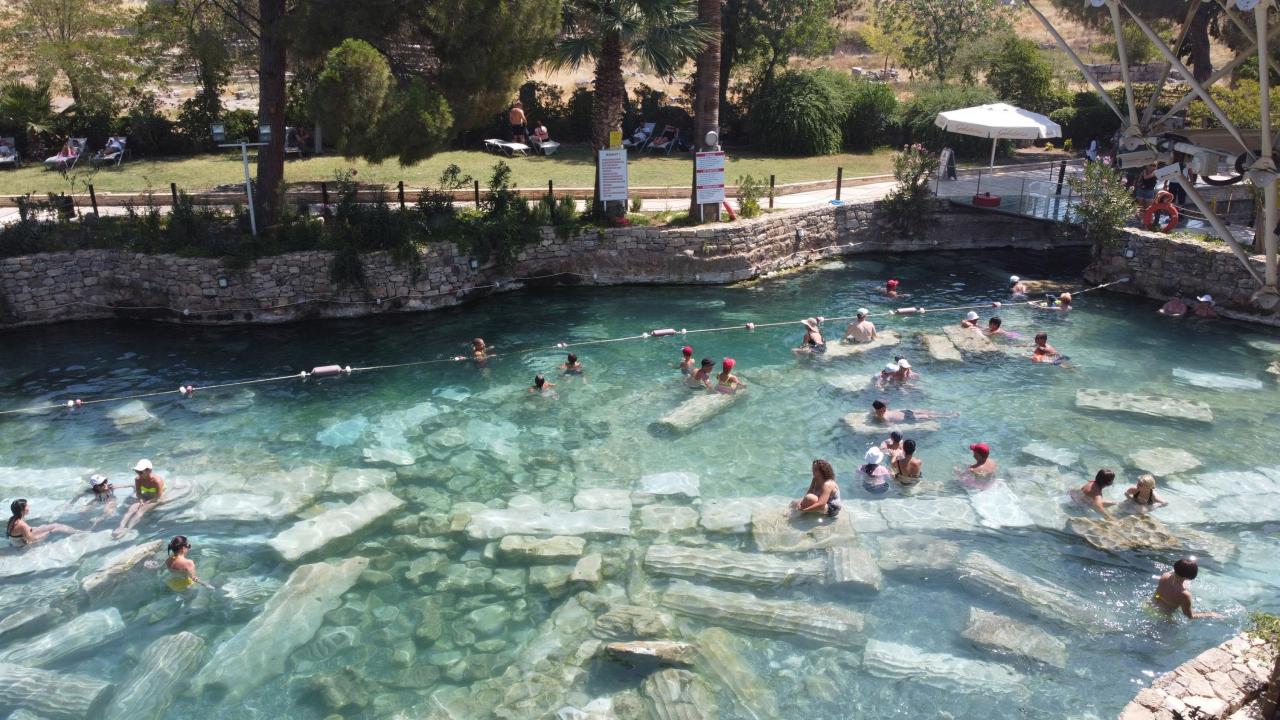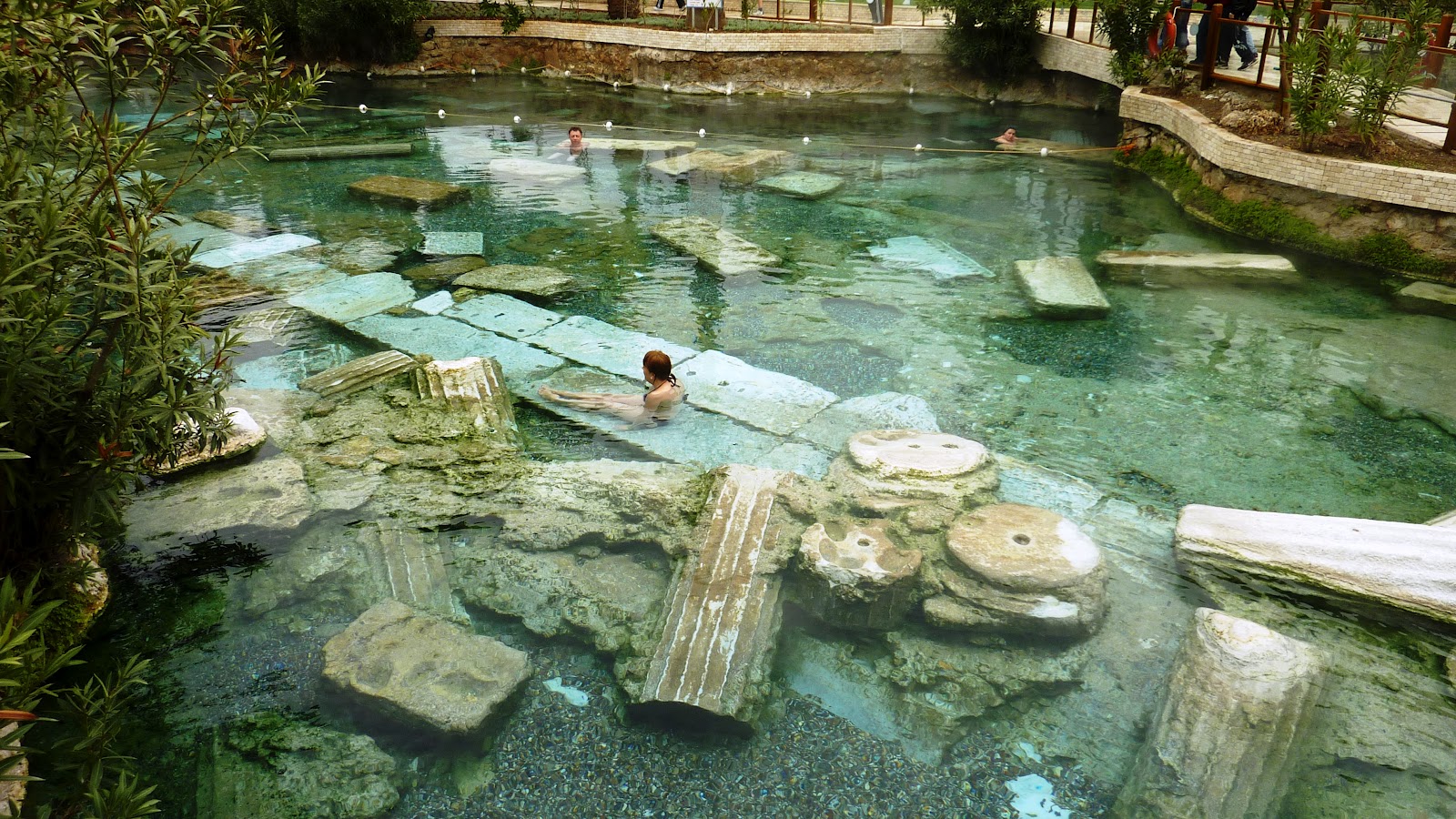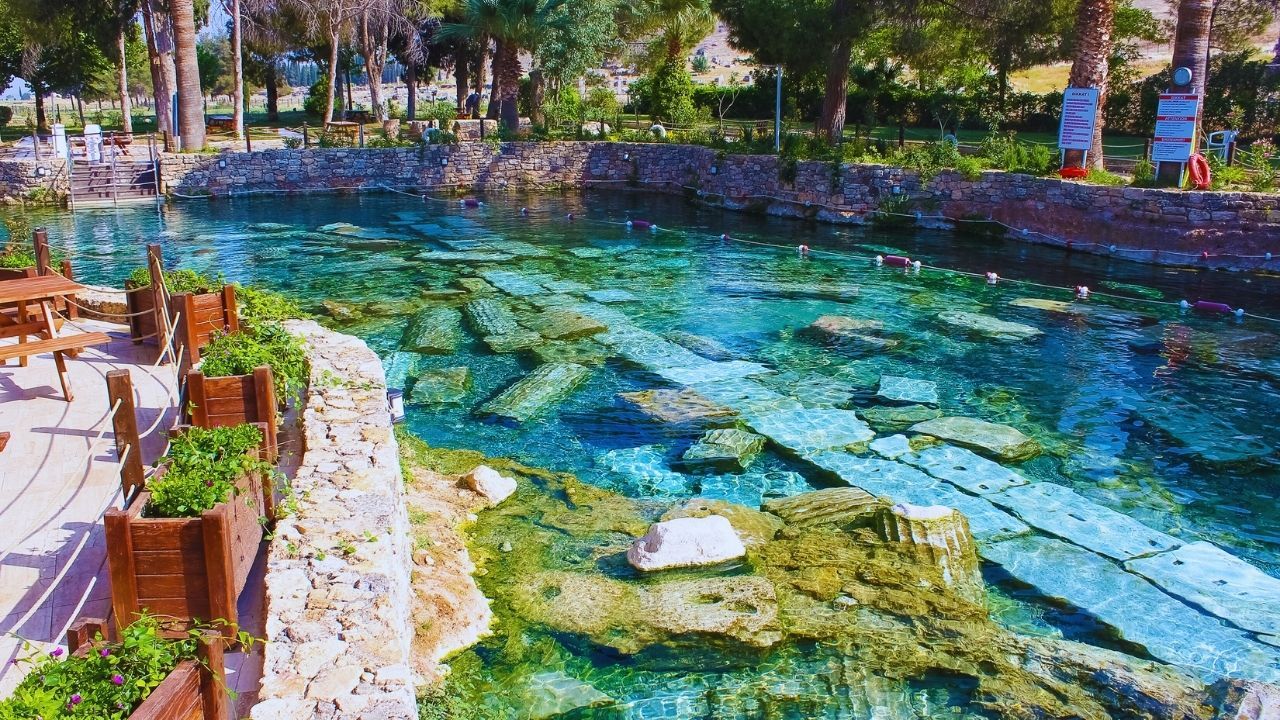Have you ever imagined swimming among 2,000-year-old Roman columns, in water whispered to be the beauty secret of queens? This isn't a fairy tale; it's a real miracle at the heart of the ancient city of Hierapolis, a UNESCO World Heritage site in Denizli: the Antique Pool, or as it's more famously known, Cleopatra's Pool. This is more than just a pool; it's a magical atmosphere where history, healing, and nature intertwine, promising a journey through time. In this article, we will detail all the things to do at the Antique Pool (Cleopatra's Pool)and ensure you are fully equipped for this unique experience. Fasten your seatbelts, because we're diving into the most delightful waters of history!
Swim in Thermal Waters Among Ancient Columns and Marble Ruins
The most captivating aspect of the Antique Pool is that it wasn't built by human hands. Instead, it is a product of nature's destructive and creative power. The story begins with a great earthquake in the 7th century A.D. that shook the region. This violent tremor destroyed a part of the civil agora—the majestic portico lined with columns, which was the center of social and commercial life in Hierapolis at the time. The massive crater opened by the earthquake naturally filled with the healing thermal waters that have flowed beneath the city for thousands of years, freezing that moment in time. The pool we swim in today is nothing less than a time capsule created by this dramatic event.
What you feel the moment you enter the water is not just a warm touch, but history itself. Every marble block, every piece of a column that accompanies you under your feet and at shoulder level, are silent witnesses to a square where Romans once walked and talked. This is not like looking at artifacts behind glass cases; this is touching history, feeling it, and becoming a part of it. It's no surprise that thousands of people from all over the world, from America to the Far East, flock here just to have this experience. These columns were once part of a vibrant Roman city. You can complete this experience by visiting the Hierapolis Ancient City, which awaits you in all its glory before or after you enter the pool.

Enjoy the 36°C Healing Water in Both Summer and Winter
The Antique Pool has a secret that makes it irresistible every day of the year: the temperature of its water. Whether in the scorching heat of summer or on a cool winter morning, the pool's water remains constant at 36 degrees Celsius. This temperature is considered ideal for the human body, so you won't feel a shiver or feel overwhelmed when you get in. Just a perfect, relaxing warmth that envelops you... This feature makes the pool a unique getaway for all four seasons.
Of course, the water's only feature isn't its temperature. For centuries, these waters have been a destination for those seeking healing. It is said that thanks to the rich minerals in the water, it is beneficial for cardiovascular diseases, rheumatism, skin, and nervous system disorders. But the most enjoyable part is how these healing properties blend with legends. According to the most famous tale, the Egyptian Queen Cleopatra, renowned for her beauty, would come to Hierapolis to bathe in these waters to preserve her beauty and youth. Another fascinating legend tells of the Virgin Mary, who is said to have healed her ailing eyes by washing them in this water during her journey to Ephesus. A little whisper circulates among historians: the earthquake that created the pool occurred centuries after Cleopatra's time. But legends are beautiful, aren't they? Who knows, perhaps Cleopatra bathed in another ancient pool fed by the same spring. Ultimately, you are experiencing the privilege of swimming in waters that are the subject of legends.

Observe the Ancient Ruins at the Bottom of the Pool
Swimming in the Antique Pool is also like strolling through one of the world's most interesting underwater archaeology parks. Thanks to the clarity of the thermal water, the bottom of the pool is displayed like an open-air museum. When you enter the water, be ready to discover the history not only around you but also beneath your feet. Massive columns that have lain underwater for hundreds of years, column capitals with elegant carvings, and marble fragments from the agora whisper the architectural grace of the ancient world to you.
To take this experience to the next level, we have a small but effective tip: be sure to bring swimming goggles! The moment you put them on, the underwater world will unfold before you with a completely different clarity. Feeling like an explorer, you can glide among the ancient ruins and examine the details of carvings made by a Roman stonemason thousands of years ago. You can even carefully, without damaging the historical texture, touch the marble surfaces smoothed by the water and establish a physical connection with the past. This is not just a swimming activity; it is a personal journey of discovery. After exploring this historical treasure at the bottom of the pool, don't forget to take a walk on the snow-white Pamukkale travertines, another miracle created by these healing waters on the earth's surface.

While You're Here...
Your adventure doesn't end after rejuvenating in the magical waters of the Antique Pool! Pamukkale and its surroundings offer many alternatives for you to collect unforgettable memories.
Pamukkale Travertines: Walk barefoot on these snow-white cotton-like terraces created by the same waters that give life to the Antique Pool and take unique photos.
Hierapolis Ancient Theatre: Climb one of the best-preserved Roman theaters in Anatolia, sit on its steps, and feel the splendor of history against the view in front of you.
Laodikeia Ancient City: Descend into the depths of history in this massive ancient city, home to one of the Seven Churches mentioned in the Bible, just a short drive away.
Karahayıt Red Water: Experience a different kind of healing with the iron-rich, red-colored thermal waters and mud, which contrast with the white of Pamukkale.
Frequently Asked Questions (FAQ)
Is the Museum Card (Müzekart) valid for entry to the Antique Pool? No. You can enter the Pamukkale-Hierapolis archaeological site for free with a Museum Card, but you must purchase a separate ticket to swim in the Antique Pool. The Museum Card is not valid for the swimming fee, although discounts have occasionally been offered to cardholders. We recommend confirming the current policy at the ticket booth upon arrival.
How long can I stay in the Antique Pool? Is the swimming time limited? Typically, your ticket allows for a swimming time of about 2 hours. This duration is quite sufficient to enjoy the pool, explore the ancient ruins, and soak in the historical atmosphere. As rules may change depending on crowd levels, it is a good idea to confirm the time limit at the entrance.
What should I bring with me to the pool? You should definitely bring your swimsuit, a towel, and slippers. There are lockers available where you can securely store your belongings, usually for a small deposit (the deposit is returned when you hand back the key). Bringing a pair of swimming goggles is a great idea to see the ancient ruins in the clear water more distinctly.
Bibliography: For more academic and official information about the global importance of Pamukkale and Hierapolis, you can visit the official page of the UNESCO World Heritage Centre: (https://whc.unesco.org/en/list/485/).


 English
English Türkçe
Türkçe